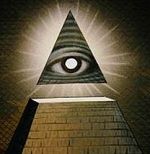This was a guide I wrote up for Krilari when he originally created his character, Anklin, in order to help him sound closer to like a real sailor.
I will preface this guide with a warning: I sailed a number of years ago and I sailed primarily on modern container ships. Furthermore, I was an engineer and so all of this deckie nonsense was forgotten once I began the crux of my training. Therefore, while the vast majority of the terms are most likely correct, I cannot in good conscious claim 100% validity!
General terms
![[Image: ship01.png]](http://img59.imageshack.us/img59/5947/ship01.png) First diagram
First diagram
![[Image: ship02.png]](http://img819.imageshack.us/img819/1787/ship02.png) Second diagram
Second diagram
Ship compartments
I will preface this guide with a warning: I sailed a number of years ago and I sailed primarily on modern container ships. Furthermore, I was an engineer and so all of this deckie nonsense was forgotten once I began the crux of my training. Therefore, while the vast majority of the terms are most likely correct, I cannot in good conscious claim 100% validity!
General terms
- Compartment: A section of the ship partitioned. Typically, different compartments have very specific names.
- Deck: A flat horizontal surface that covers a compartment or the hull. In other words, the floor.
- Bulkhead: Watertight vertical structures that divides the ship into compartments. In other words, the wall.
- Ladder: The term given to stairs aboard a vessel, most likely resulting from the narrow and nearly vertical stairs that are commonly found.
- Gangplank: The movable bridge used in boarding or leaving a ship at a pier or dock.
- Gangway: An opening on a ship's hull that is used to load and unload cargo.
- Mast: A large vertical pole that supports sails and rigging.
- Sail: A large piece of tightly woven cloth; set on a mast, it is used to increase the speed of the ship by use of the wind.
- Rigging: A system of ropes, wires, and chains used to support and operate the masts and sails of a ship.
- Berth: A compartment located below the upper deck where the crew sleep and live.
- Orlop: The lowest deck on a ship (below the waterline) where cables are typically stored.
![[Image: ship01.png]](http://img59.imageshack.us/img59/5947/ship01.png)
- Hull: The body of the ship or its frame.
- Keel: The bottom of the hull. It stretches the entire distance from bow to stern.
- Rudder: A metal or wooden plate mounted at the stern used to maneuver a ship.
- Gunport: A hatch in the hull of the ship through which cannons can fire.
- Mainmast: The middle, primary mast on a ship or any other sailing vessel.
- Main Topsail: A sail located above the main sail.
- Course Sail: The largest and lowest square sail on a mast. In the example provided, this is the Main Course Sail.
- Foremast: The front mast on a shipl.
- Yardarm (Yard): A pole which crosses a mast perpendicular to its length.
- Shrouds: Taut ropes that from from the masthead to the side of a ship.
- Main Deck: The highest deck of the hull, stretching the entire length of a ship. On Frostbrand, this is also the weather deck since it is exposed to the weather. Could also be called the upper deck.
- Poop deck: A deck that is formed by the raised elevation caused by a cabin, typically abaft of the mainmast. The helm is often located here.
- Quarterdeck: Often the highest deck at the rear of a ship. The quarterdeck is typically used for ceremony while at port and becomes significantly less important once under way.
![[Image: ship02.png]](http://img819.imageshack.us/img819/1787/ship02.png)
- Bow: The front part of a ship. The crew's (non-officers) quarters were often here.
- Stern: The rear part of a ship. The captain's office and the officers' quarters were often here.
- Forward: A direction indicating towards the bow of a ship.
- Abaft (aft): A direction indicating towards the stern of a ship.
- Port: A direction indicting to the left of the ship as facing a bow.
- Starboard: A direction indicating to the right of the ship as facing a bow.
- Amidships: In or near the middle of a ship. It typically follows the line of the keel, but this is not always true. It can refer to a direction or a location.
Ship compartments
- Bilge: The lowest compartment on a ship where the hulls meet. Water that doesn't drain from the ship typically gathers in the bilge and so must be pumped out occasionally in order to keep the ship from sinking.
- Forecastle (Foc'sle): An enclosed area located at the forwardmost part of the main deck. This is typically where the sailors (non-officers) live.
- Galley: Where food is cooked and prepared.
- Gun deck: A deck where the cannons are mounted and fired.
- Head: A ship's toilet, typically located near the bow in older sailing vessels. It's usually placed slightly above the waterline so that the waves can naturally wash the refuse away.
- Hold: An area located below the orlop, often used to store cargo.




![[Image: Boys.jpg]](http://i929.photobucket.com/albums/ad135/davemwow/Boys.jpg)

![[Image: yEKW9gB.png]](http://i.imgur.com/yEKW9gB.png)

![[Image: B2hmvU1.gif]](http://i.imgur.com/B2hmvU1.gif)



![[Image: desc_head_freemasons.jpg]](http://www.tokenrock.com/ftp/desc_head_freemasons.jpg)